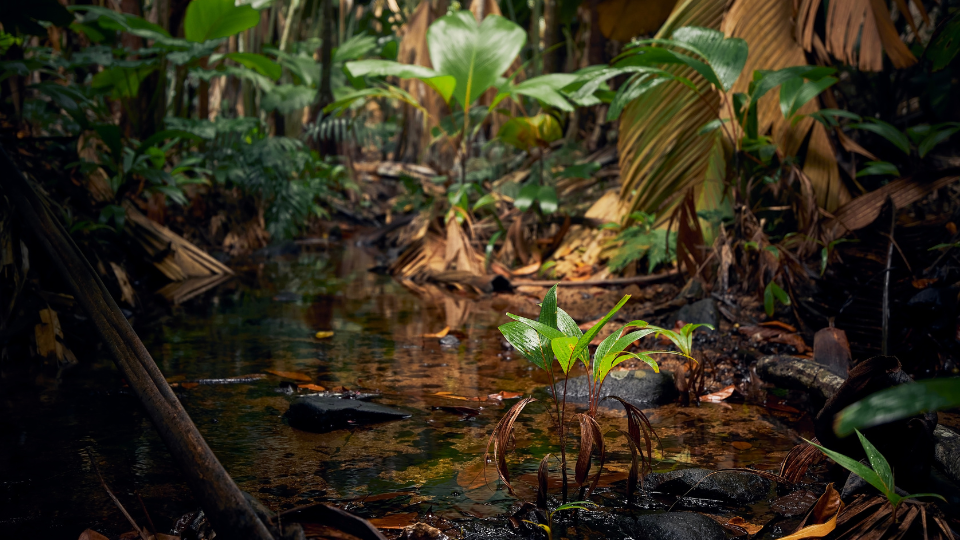In the last decade, carbon credits have emerged as a key tool in the fight against climate change, establishing a market that seeks to price and offset greenhouse gas emissions. However, as the world focuses its efforts on carbon metric, this approach, while necessary, is better understood as a tool that accounts for only a part of a challenging environmental issue we have to overcome. This scenario gains even more traction with the current discussions at COP 16 in Cali, Colombia, an international environmental forum where experts discuss global strategies for the preservation of biodiversity, and seek to establish concrete indicators to monitor the progress of the conservation goals set.
The limitation of an exclusively carbon-focused perspective becomes clear when we take into consideration the complexity of the biological diversity that underpins our ecosystems. After all, one hectare of preserved forest is not just a carbon reservoir, but is primarily a network of interconnected interactions between thousands of animal and plant species, each playing a pivotal role in ecological balance and resilience, as described by Fritjof Capra.
It is precisely this broader and more diffuse understanding that has driven the development of biodiversity credits, a natural evolution in the environmental asset market. As our understanding of ecosystems deepens, it becomes clear that preserving biodiversity is just as crucial as reducing carbon emissions to ensure a sustainable future.
Biodiversity credits thus stand as a more comprehensive approach to environmental conservation. Unlike carbon credits, which measure only the ability to sequester or reduce CO2 emissions, these new instruments consider multiple aspects of ecosystem health. They recognize and value the preservation of biological diversity itself, including the conservation of species, the maintenance of natural habitats, and the protection of essential ecosystem services. This approach beyond carbon allows a more accurate assessment of the real ecological value of a preserved area, considering not only its biomass, but also its biological richness, its intricate systems, and ecological functionality.
The intrinsic value of biodiversity transcends any singular metric. Healthy ecosystems provide key services such as pollination, water regulation, natural pest control, and maintenance of soil fertility. In addition, biological diversity increases the resilience of ecosystems in the face of climate change, acting as a natural shield against environmental disturbances. These benefits, often invisible in traditional carbon metrics, are key to biodiversity credits. It is known that, like the impact of bees, the preservation of a single species can have effects on the entire ecosystem, positively ensuring the maintenance of core ecological processes that benefit everyone.
We are not here advocating for the replacement of one type of environmental credit by another, but rather emphasizing that the integration between carbon credits and biodiversity represents a crucial step towards more effective environmental protection. While carbon credits remain capital to combat global warming, biodiversity credits supplement this approach, ensuring that environmental preservation is truly holistic. This synergy creates, from a more integrated approach, a more robust system for valuing environmental services, in which different aspects of environmental conservation are recognized and rewarded. The joint implementation of these instruments can enhance conservation results, creating stronger economic incentives for the integral preservation of ecosystems.
A concrete example of this new approach is the ETHNO.BIO project, implemented on indigenous lands in the Amazon. This effort innovates by combining environmental preservation with sustainable economic development, using biodiversity credits to fund conservation while strengthening native communities. The project demonstrates how valuing biodiversity can create a virtuous cycle of preservation and socioeconomic development. By working closely with indigenous communities, ETHNO.BIO recognizes and values traditional knowledge about biodiversity, integrating it into modern conservation mechanisms, and generating tangible benefits for the populations that historically protect these ecosystems.
The current scenario calls for a profound transformation in our relationship with the environment. Biodiversity credits emerge as a promising tool in this transition, allowing the intrinsic value of nature to be recognized and preserved in its entirety. While discussions move forward in international environmental forums with the definition of global targets and indicators for biodiversity, practical initiatives such as biodiversity credits show concrete ways to achieve these goals. The challenge now is to expand and strengthen these mechanisms, ensuring that our quest for sustainability truly goes beyond the carbon curtain. The preservation of biodiversity is not only an environmental issue – it is an imperative for the maintenance of the natural systems on which we depend, as well as for building a more resilient and balanced future in a scenario where climate change is no longer a future threat, but our present reality.
Autor: Edson Pontes Pinto • email: edson.pinto@ernestoborges.com.br

